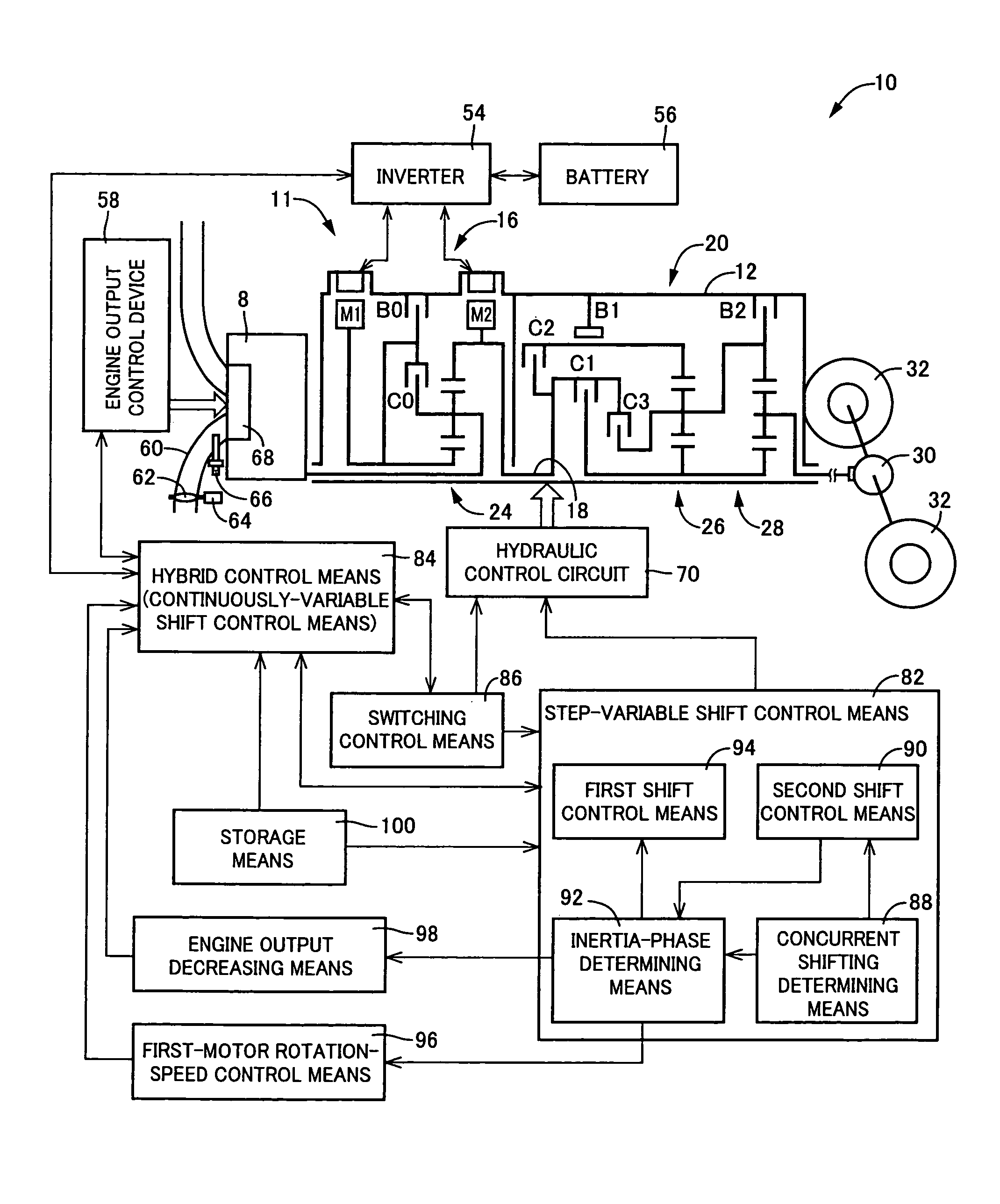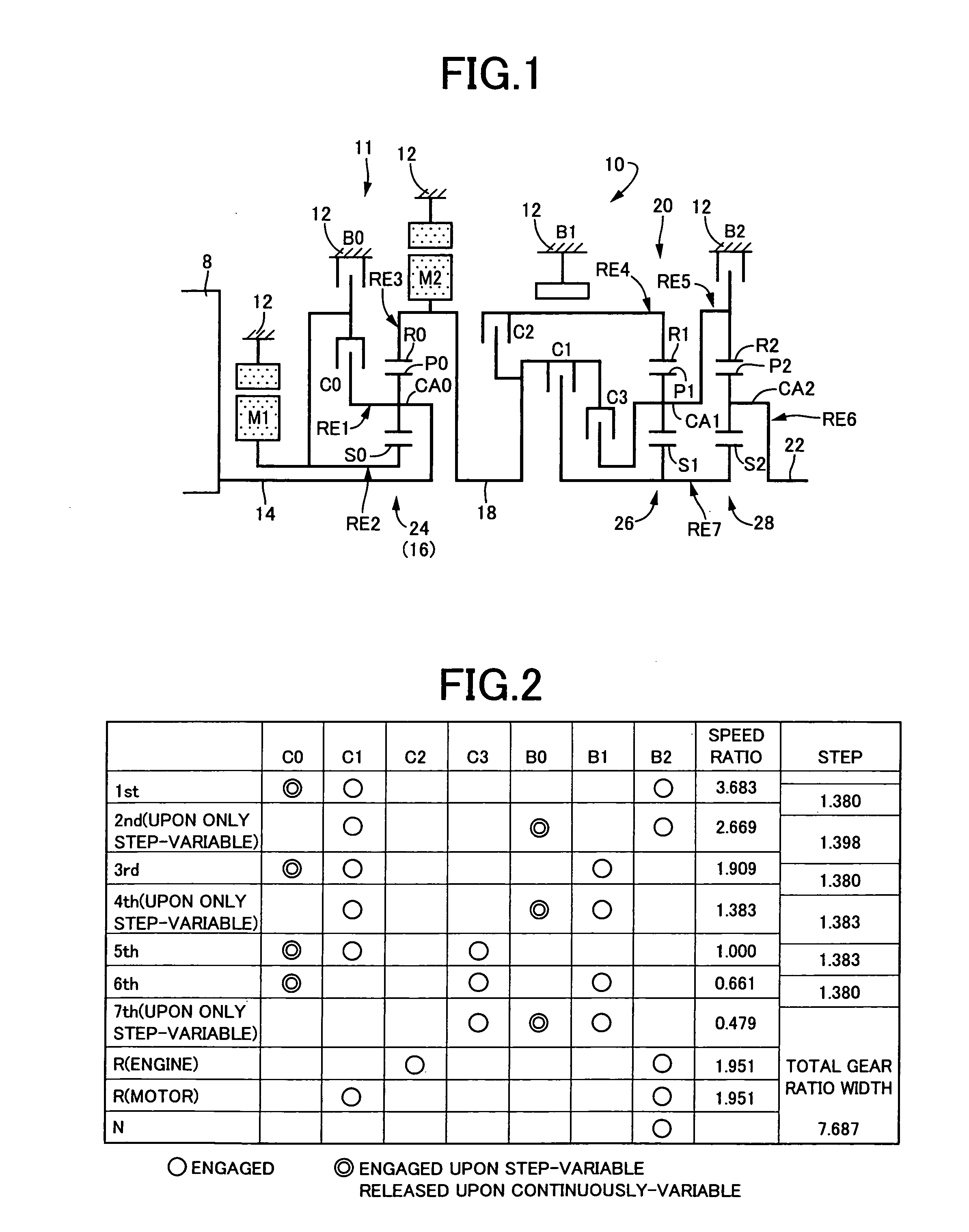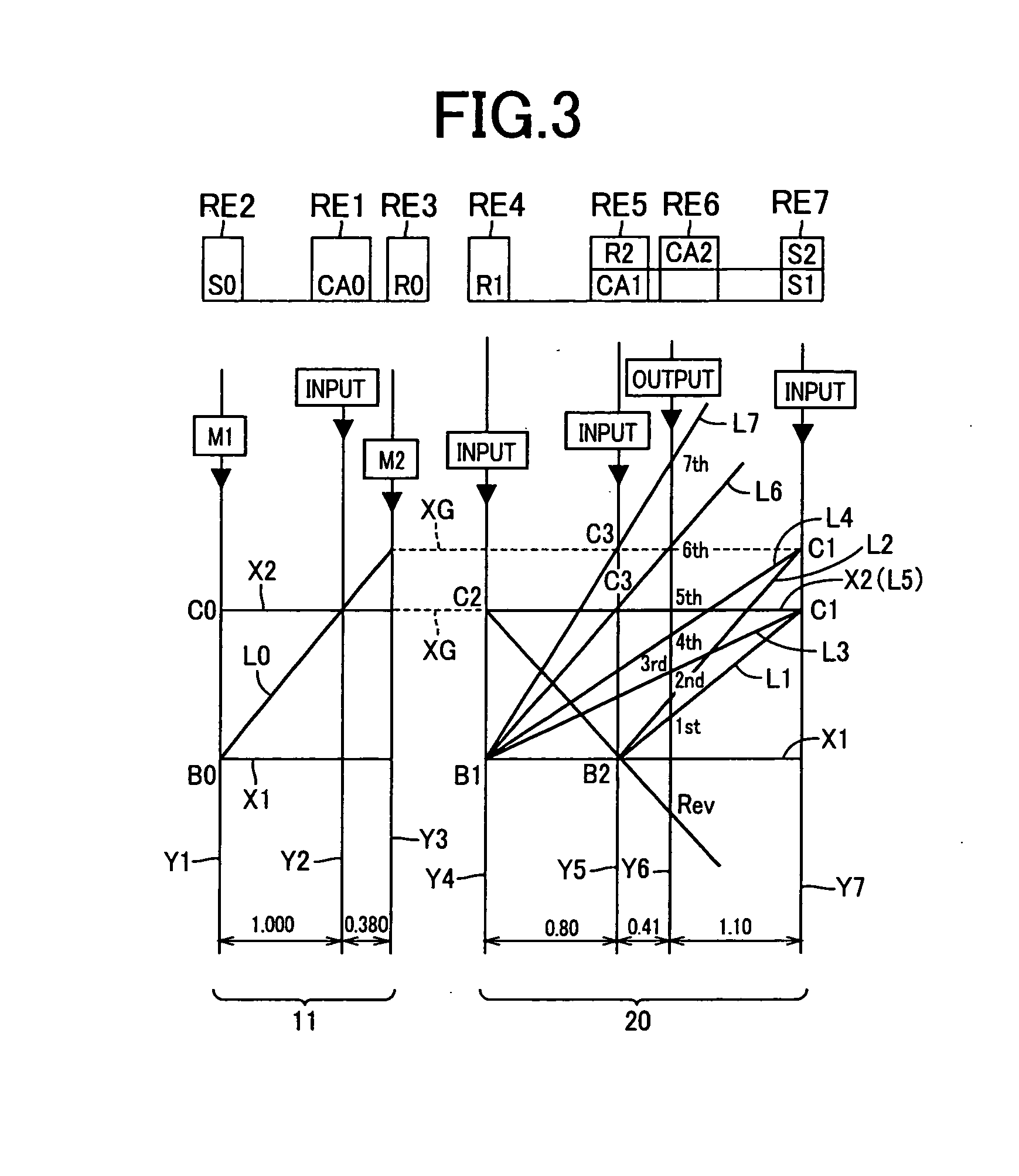Control device for vehicular drive apparatus
a control device and vehicular drive technology, applied in the direction of engine-driven generators, machine/engine control, process and machine control, etc., can solve the problems of increasing the number of components, the large size of the vehicular drive apparatus as a whole, and the likelihood of an increase in gearshift shock, etc., to suppress the shifting shock
- Summary
- Abstract
- Description
- Claims
- Application Information
AI Technical Summary
Benefits of technology
Problems solved by technology
Method used
Image
Examples
embodiment 1
[0060]FIG. 1 is a skeleton view illustrating a shifting mechanism (power transfer device) 10 forming a part of a hybrid vehicle drive apparatus to which a control device of a first embodiment according to the present invention is applied. In FIG. 1, the shifting mechanism 10 includes: an input rotary member, i.e., an input shaft 14, mounted on a common axis in a transmission case (hereinafter referred to as a “case”) acting as a non-rotary member mounted on a vehicle body, which is connected directly to an engine 8 or indirectly connected thereto via a pulsation absorbing damper (vibration damping device), not shown; a differential portion 11 acting as a first shifting portion or a continuously-variable shifting portion connected to the input shaft 14; a second shifting portion, i.e., an automatic shifting portion 20 connected to a power transfer path in series via a power transfer member (power transfer shaft) 18 between the differential portion 11 and drive wheels 32 (see FIG. 7) ...
second embodiment
[0166]FIG. 11 is a skeleton view illustrating a structure of a shifting mechanism 110 of another embodiment according to the present invention. FIG. 12 is an engagement operation table representing the relationship between gear positions of a shifting mechanism 110 and a combination of engagements of hydraulically operated friction engaging devices. FIG. 13 is a collinear chart illustrating a shifting operation of the shifting mechanism 110.
[0167]Like the structure of the first embodiment, the shifting mechanism 110 includes the differential portion 11, composed of the first electric motor M1, the power distributing mechanism 16 and the second electric motor M2 disposed on a first axis RC1, and an automatic shifting portion114 of forward-drive four gear positions disposed on a second axis RC2 extending parallel to the first axis RC1. This is because of shortening an axial dimension in view of accommodating the shifting mechanism 110 in a trans-axle case (hereinafter referred to as a...
PUM
 Login to View More
Login to View More Abstract
Description
Claims
Application Information
 Login to View More
Login to View More - R&D
- Intellectual Property
- Life Sciences
- Materials
- Tech Scout
- Unparalleled Data Quality
- Higher Quality Content
- 60% Fewer Hallucinations
Browse by: Latest US Patents, China's latest patents, Technical Efficacy Thesaurus, Application Domain, Technology Topic, Popular Technical Reports.
© 2025 PatSnap. All rights reserved.Legal|Privacy policy|Modern Slavery Act Transparency Statement|Sitemap|About US| Contact US: help@patsnap.com



